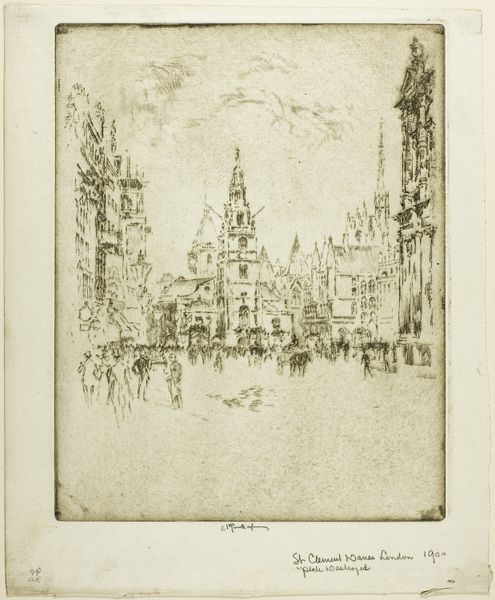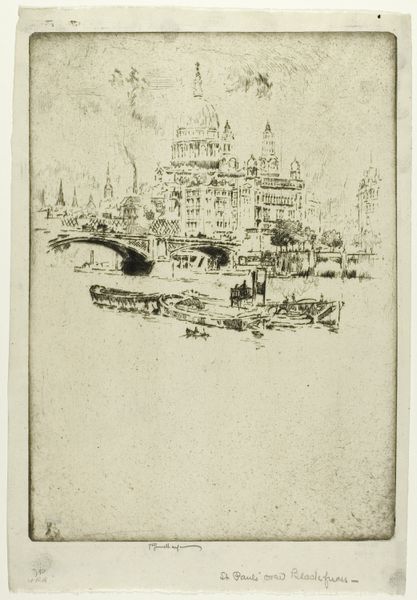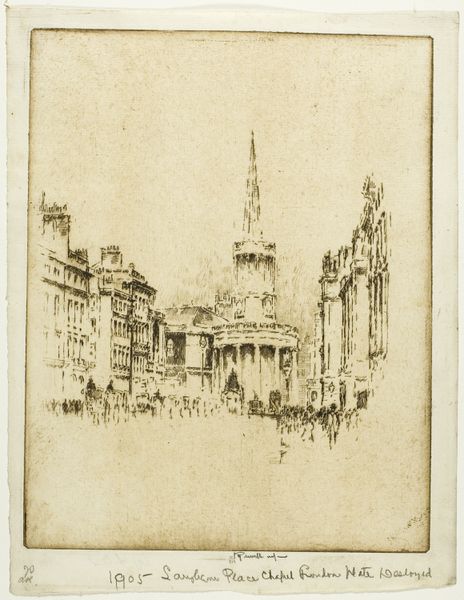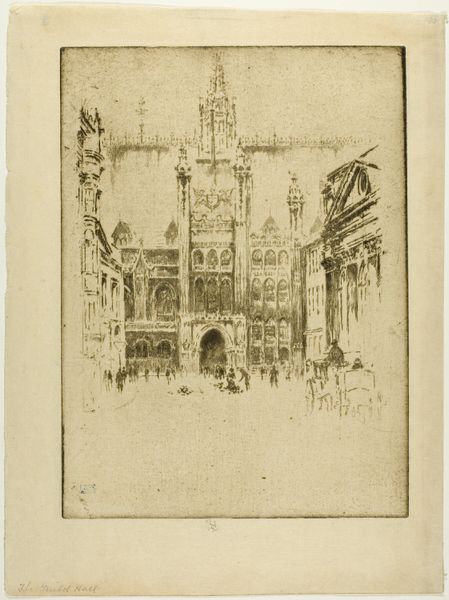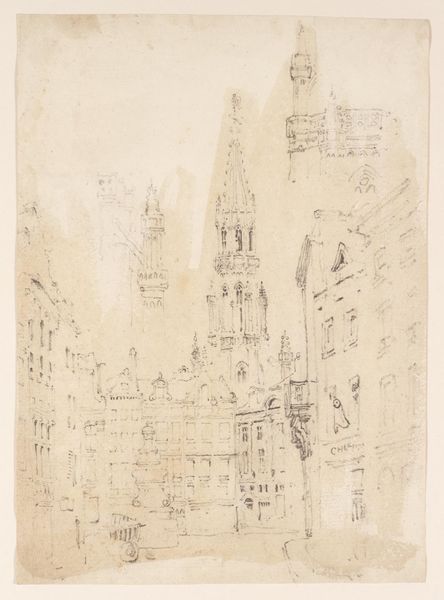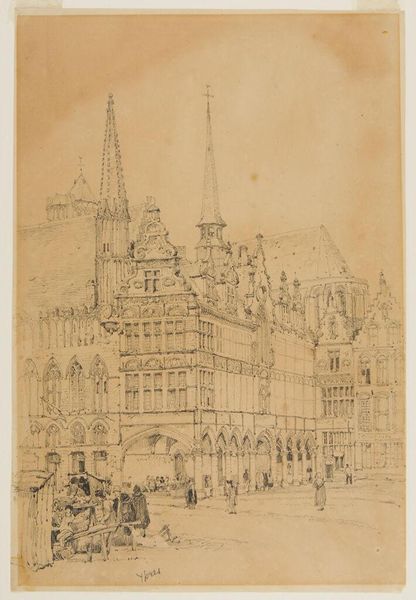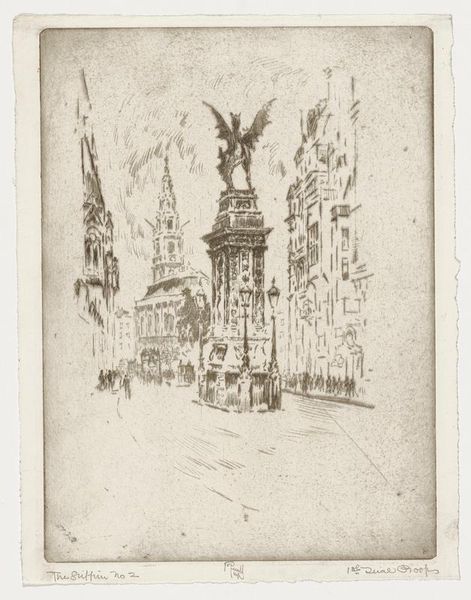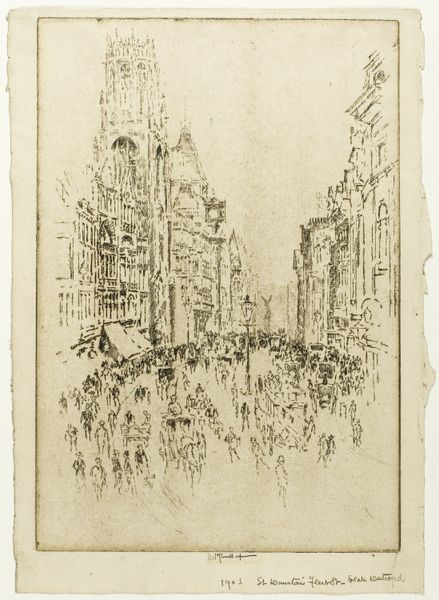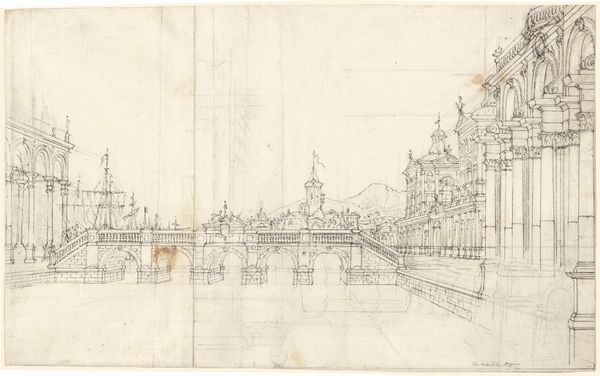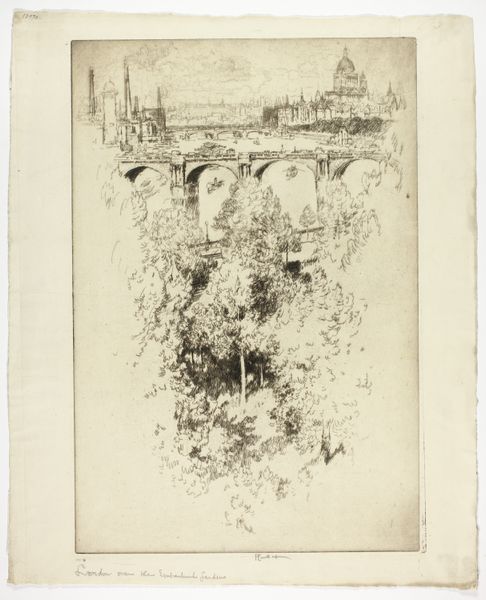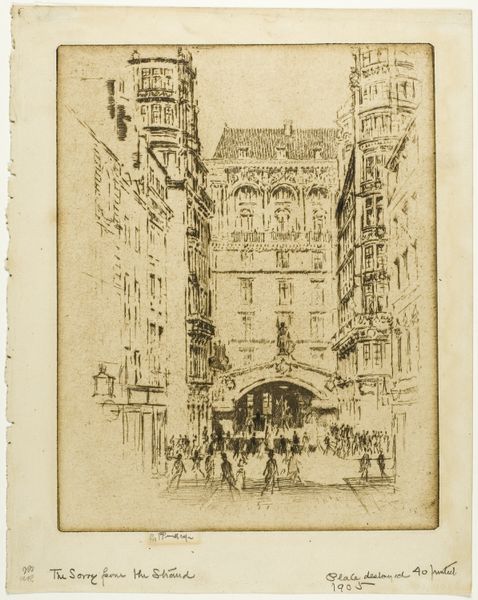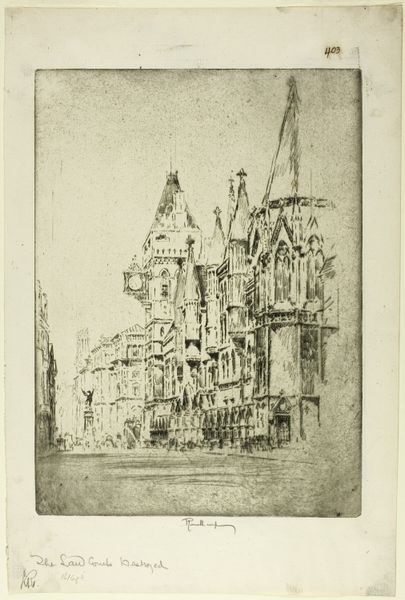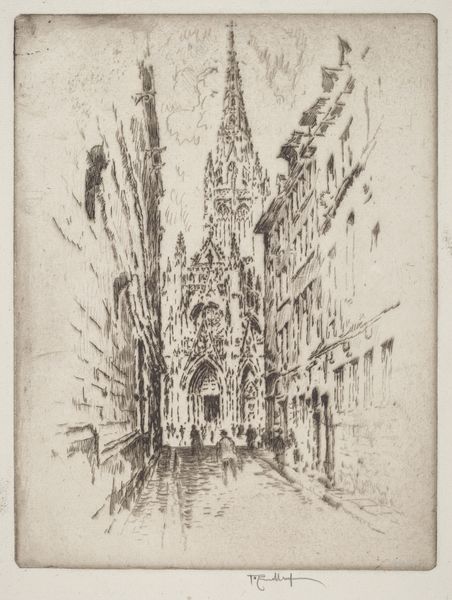
Dimensions: 265 × 210 mm (image); 291 × 241 mm (sheet)
Copyright: Public Domain
Curator: Joseph Pennell’s etching, "Ludgate Hill," created around 1906, depicts a bustling London scene. There’s a frenetic energy in the marks that feels very modern, despite its Edwardian origin. Editor: My first impression is that it feels haunted, almost ethereal. The lightness of the etching gives a ghostly quality to the Victorian architecture and figures bustling below. Curator: Yes, Pennell was deeply interested in capturing the fleeting atmosphere of urban life. Note the bridge or viaduct dominating the composition. It acts almost as a proscenium arch, framing the chaos below, imbuing a theatrical feel. Think about the symbolic weight of bridges, as links, connectors, and portals to the modern. Editor: Exactly. And beyond just linking spaces, it almost physically and psychologically divides the London population into different social classes, between those on the bridge and those under it, and also maybe suggests some degree of disconnect inherent to fast-paced modern life. Curator: He belonged to a generation grappling with industrialization and urbanization. The print's frenzied lines seem to reflect a sense of wonder, and anxiety, that emerged within this period of radical change. There's a potent image of a coach right in the center that may recall prior times, or that perhaps illustrates an enduring division in culture, society, or the city. Editor: Agreed. There is such tension between that older form of transit versus the new electric streetcar. This also strikes me as inherently a feminist subject; because the metropolis brought about unique gender dynamics. Were the bustle and possibilities freeing for some women or only another form of societal and political constriction? It is difficult to tell what is reflected from the scene below the bridge. Curator: What do you think it shows in contrast to other bridges? Is this specific location an intended marker of the artist's cultural criticism? Bridges have long been emblems of connection and of power; yet in our own era we have witnessed actual bridges that came to be synonymous with conflict and segregation. I do think it reflects the artist's sharp cultural insight in a manner not commonly observed in typical architectural representations. Editor: It provides a lens for reconsidering the Victorian period. I hadn’t expected this much complexity from a simple etching. Curator: Right. It certainly invites us to revisit received understandings.
Comments
No comments
Be the first to comment and join the conversation on the ultimate creative platform.
